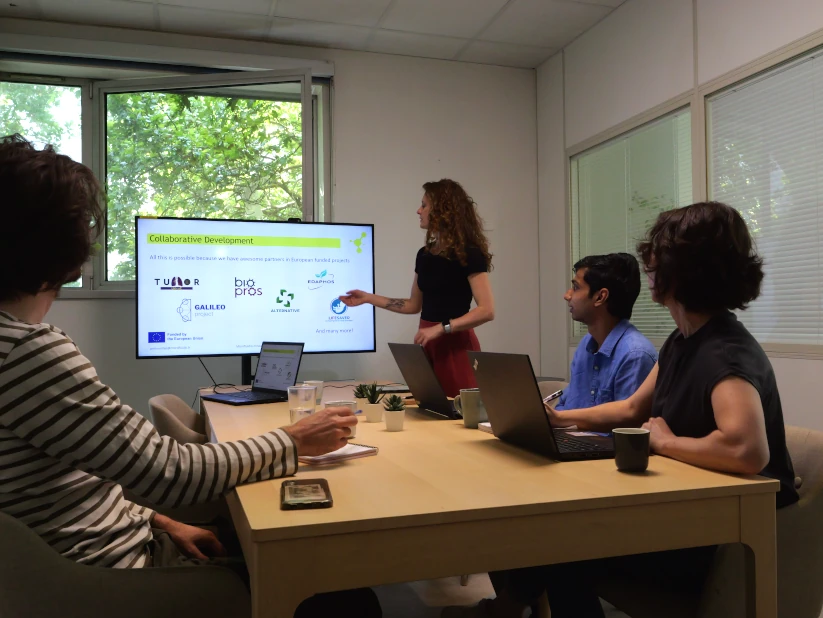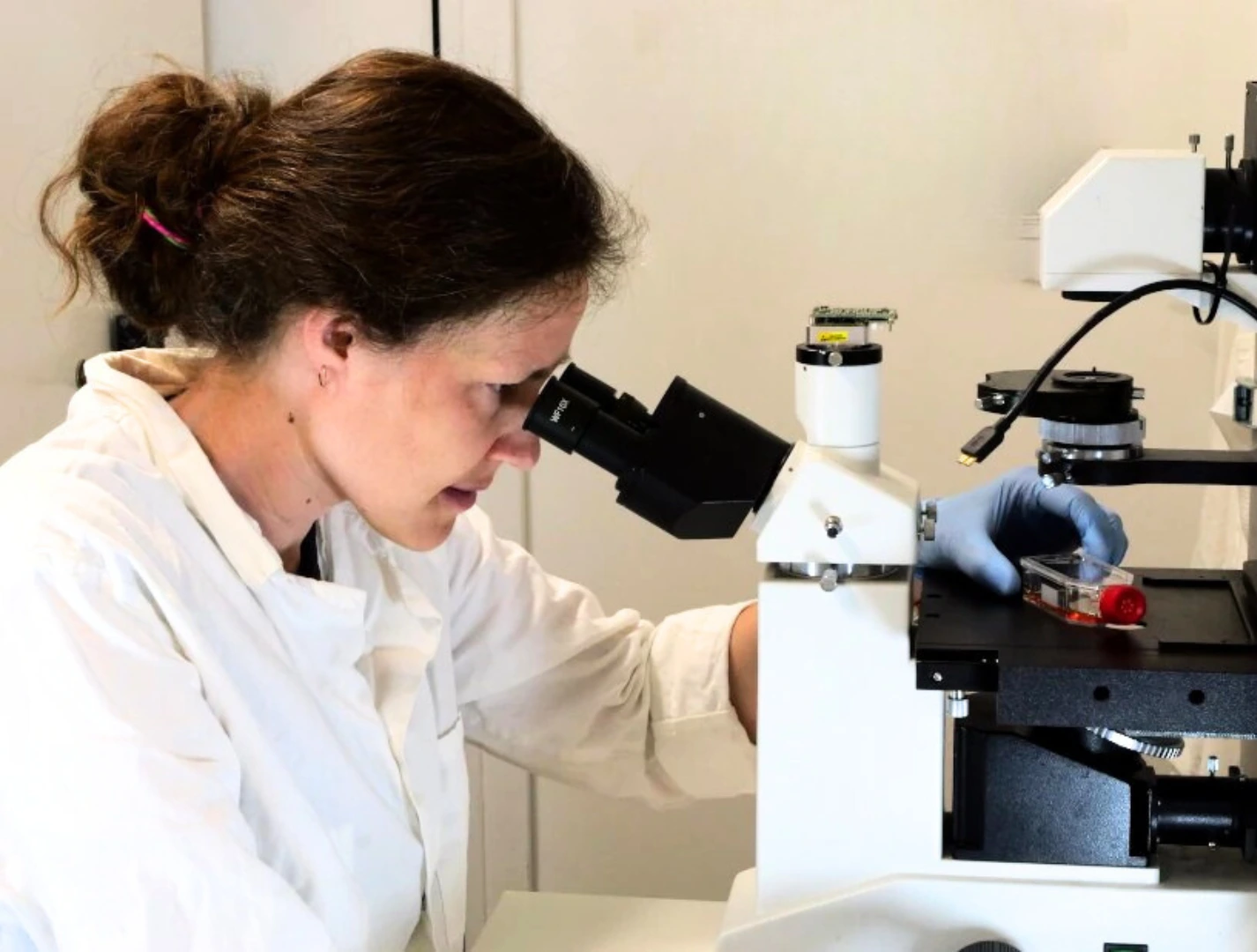Why choose the Microfluidics Innovation Center for Horizon Europe collaboration?
Author
Guilhem Velvé Casquillas, PhD
Publication Date
July 4, 2025
Keywords
Intelligent Microfluidics
Deep Learning
Microfluidic Devices
Artificial Intelligence
Machine Learning
Horizon Europe
Project partners
EU-projects
Your microfluidic SME partner for Horizon Europe
We take care of microfluidic engineering, work on valorization and optimize the proposal with you
How do we collaborate under Horizon Europe?
- Before the project’s submission
- Communicate on relevant Horizon Europe calls
- Write the technical sections of the proposal (WPs and Task description) connected to microfluidics
- Review the proposal and give feedback based on experience from previous submissions
- Connect you with a partner from our network with complementary expertise, if needed
- At project start
- Collect technical specifications on the custom microfluidic system and design a first prototype
- Start market analysis and exploitation planning
- Connect with project partners and start discussions on specific needs
- Throughout the project
- Provide microfluidics expertise and continuous improvements to the microfluidic system
- Transfer the prototype to our partners’ lab for testing and support instrument us
- Ensure the system meets market needs through ongoing user and market engagement

Side Note:
We are not a consulting company. Like all project partners, we are only funded if the proposal is selected by the European Commission, and only for the R&D work packages we deliver!
How do we collaborate?
Horizon Europe collaboration is done in 4 steps:
- You have a research project you plan to coordinate and submit under a Horizon Europe call.
- You get in touch with us, and we explore together whether microfluidic technologies could add value to your project.
- We write the technical descriptions linked to microfluidics in the proposal with the rest of the consortium and supply administrative information.
- If the project is selected, each partner carries out their tasks as defined, under the coordination of the project leader.
- The MIC has a strong interest to valorize project outcomes: either through licensing agreements, the creation of a spin-off companies or direct production on-site!

What do we bring to your project?
We contribute across all phases of Horizon Europe collaboration, with a focus on technical input and collaborative work.
- Help interpret Horizon Europe topics and identify a suitable call
- Contribute to the technical, innovation, and impact sections of the proposal
- Suggest potential academic or industrial partners, when relevant
- Develop and integrate tailor-made microfluidic solutions adapted to the application needs, from early concept to prototype
- Contribute, where appropriate, to market-related tasks such as business modeling and exploitation planning of the technological development
- Over 10 years of work in microfluidics for health, agri-food, and environmental fields
- Participation in 50+ European-funded projects (H2020, Horizon Europe, and national programmes)
- Experience in EU projects involving multiple partners and disciplines
- Familiarity with Horizon Europe proposal and evaluation processes
- Previous collaborations with both academic institutions and companies
New to Horizon Europe collaboration? Here's how it works
Roles in the project
- The coordinator leads the project. Prepares and submits the proposal, manages the consortium, serves as the main contact with the European Commission, and oversees the work if funded.
- Partners are organizations (e.g., companies, universities, research centers) that provide specific expertise to different aspects of the project.
Proposal process overview
- Find a relevant call
Explore the Horizon Europe program to identify a topic that aligns with your idea. - Form a consortium
Bring together academic and industry/SME partners from different countries with complementary expertise. - Write the proposal
Define the objectives, methodology, work packages, timeline, and expected impact. - Submit the proposal
Use the EU Funding & Tenders Portal and follow the required format and guidelines. - Evaluation and grant agreement
If selected, you sign the Grant Agreement with the European Commission and start the project.

FAQ – Microfluidics Innovation Center & Horizon Europe
What is the Microfluidics Innovation Center (MIC)?
The Microfluidics Innovation Center, or MIC, is a small to medium-sized enterprise (SME) company based in Paris. It was created in 2011 by researchers from Elvesys. We focus on building custom microfluidic systems and have participated in over 50 European and national research projects. Some of our work has even helped launch 10 spin-off startups.
PS: We are not a consulting firm! Like all project partners, we are only funded if the proposal is selected by the European Commission, and only for the R&D work packages we deliver.
In which research areas does the MIC engage?
Our work covers a wide range of applications, from lab-on-a-chip tools to diagnostics, organ-on-chip systems, and environmental monitoring. We’ve worked in health, biotech, agriculture, and beyond.
What is the MIC’s experience with Horizon Europe projects?
We’ve been involved in European projects since 2011, starting with FP7, then Horizon 2020, and now Horizon Europe. We’ve joined over 50 consortia, typically as a technical partner, focusing on R&D, prototyping, and helping shape the project’s impact.
What services can the MIC provide to a consortium?
We help design proposals, draft technical content, identify missing expertise in the consortium and suggest partners, and develop microfluidic technologies. We also support activities linked to market potential and impact.
Do you charge fees for proposal preparation?
No, we don’t. We’re not a consultancy, and like other partners, we only receive funding if the project is selected and our work is part of the grant. We participate in the writing of the technical developments.
Can the MIC help with call selection and proposal planning?
Yes. We keep an eye on Horizon Europe calls, including EIC Pathfinder, RIA/IA, and MSCA, and help determine which one is best for your idea. We can also help shape the project scope and align it with what evaluators are looking for.
What makes the MIC a valuable partner?
We bring over a decade of microfluidic experience, have been part of many EU projects, and understand the Horizon Europe process. We’ve worked with both academic and industrial teams. The MIC has a strong interest in the valorization of project results and supports the commercialization of the microfluidic developments.
How early should I involve the MIC in my project planning?
It’s best to reach out early, ideally during the concept phase. But if you’re running late, no problem, we’re used to joining projects at the last minute and still getting everything done properly.
Is the MIC capable of supporting innovation beyond the technical scope?
Yes. Alongside technical development, we can also help with data management, exploitation planning, and collaborate on regulatory aspects.
How do I contact the MIC to explore a collaboration?
Simply visit our ‘Contact Us’ page and complete the form.
What types of partners does the MIC usually work with?
We collaborate with universities, research institutes, SMEs, hospitals, and companies, anyone whose work intersects with microfluidics.
Does the MIC coordinate Horizon Europe projects?
No, we usually join as technical partners. We focus on contributing R&D and supporting the team with specific technical tasks.
What technologies can the MIC develop within a project?
We focus on different types of microfluidic systems: pressure and flow setups, miniaturized and automated perfusion systems, even embedded control systems. We adapt our tools to fit your project goals and constraints. When needed, we can design and prototype microfluidic chips and cartidges. We routinely integrate external sensors like pH, CO2, oxygen and biosensors among others.
How does the MIC handle IP (intellectual property) within EU projects?
We follow EU rules and respect the agreements made within the consortium. We’re flexible, depending on the project’s requirements.
Can the MIC support the scale-up or industrialization of a prototype?
We mostly handle prototyping. For industrialization, we can put you in contact with partners or manufacturers we’ve worked with before.


